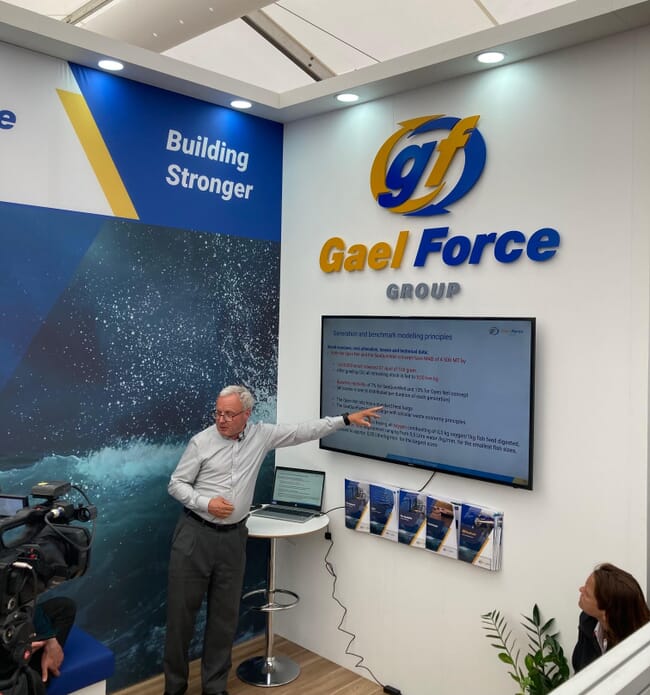
Speaking at a special event at Aquaculture UK today, Knut Senstad, who has 40 years’ experience in the salmon sector, provided a talk – backed up by an impressive body of data – which suggested that the current trend in the salmon industry to increase the size of their post-smolts grown in RAS to at least 200 g before releasing them into the ocean, could be fundamentally flawed.
While he conceded that the practice – which is increasingly commonplace in Norway, Scotland and the Faroe Islands – does have some advantages, he argued that there are other methods that should be considered.
In particular, Senstad suggested that salmon famers should consider using floating, semi-closed containment systems instead of RAS for ongrowing juvenile salmon from 100 g smolts to post-smolts of 200 g or higher.
He explained that he has been involved in semi-closed containment production since 1988, and in that time analysed the performance of 150 generations of post-smolts in such systems in Norway. He added that he had conducted 15 full business case reports for such systems – including four for “one of Europe’s largest investment groups”.
Senstad told the audience that data from his analyses suggested that producing 400 g post-smolts in land-based RAS facilities costs an average of £2.8 per fish, while in floating closed-containment units it is only £1.98 per fish. Meanwhile, producing 600 g post-smolts in RAS costs £4.8, while it is only £2.63 per kg in closed-containment units.
As a result, he argued, there is very little chance that the smolt produced in RAS would outperform those produced in closed-containment units by the time of harvest, even if they turned out to have better survival rates once transferred to traditional net pens.

Market-sized salmon production
He also produced figures comparing growing salmon from 100 g to market-sized [5.5 kg] in conventional net pens with closed-containment systems.
As the fish in the latter should not be exposed to lice, therefore not need to be treated, or starved before treatment, they should experience higher growth rates and lower mortalities, thereby increasing the overall biomass at harvest and also reducing costs. According to his calculations the biomass in the closed-containment units can be 20 percent higher, while the cost of production should be £0.2 lower per kg, thereby improving profit margins by 30 percent.
Practical applications
Senstad presented this data at an event orgainsed by Gael Force, who were unveiling their latest plans for the evolution of their 'SeaQure Farm' concept – a system that features up to eight closed-containment units per farm.
As Stewart Graham, MD of the company, explained – they are in the process of investing £2.3 million in developing the concept over the next five years.
The design is based on installing up to eight closed-containment pens at a site, linked to a feed barge, that supplies oxygen as well as feed to the fish. The barge will, ideally, also be capable of processing any dead fish into biodiesel that can be used to help power the generators.
Gael Force are now two years into the project and aim to produce their first – half-sized – version of the pens in 2023, with a view to having the first full-scale system operational within 5 years. Projected to cost in the region of £16 million per site, Graham noted that it could be used in low energy sites that were no longer viable for conventional net pen farming systems, thereby increasing the sector's opportunities to expand.



